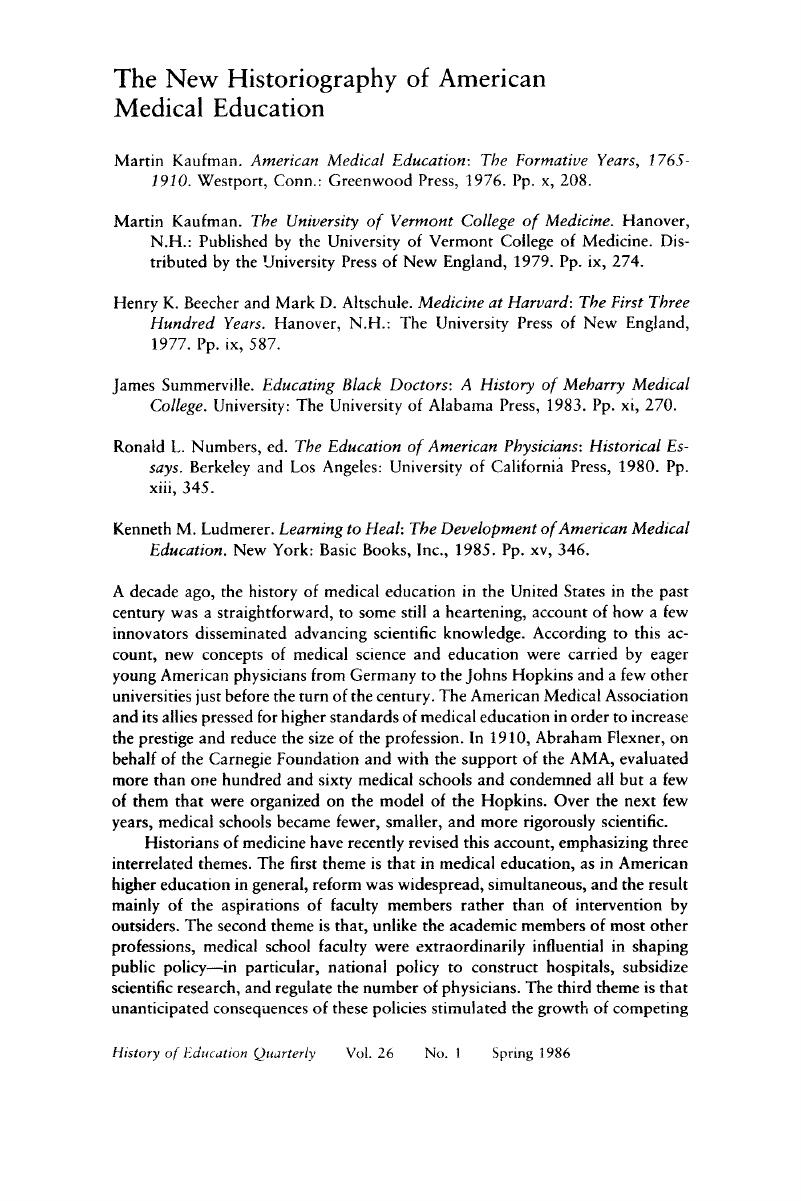Published online by Cambridge University Press: 24 February 2017

1 Fox, Daniel M., Health Policies, Health Politics: The Experience of Britain and America, 1911–1965 (Princeton, N.J., 1986; forthcoming).CrossRefGoogle Scholar
2 Fox, Daniel M., “History and Health Policy: An Autobiographical Note on the Decline of Historicism,” Journal of Social History 18 (Spring 1985): 349–64.CrossRefGoogle Scholar
3 For a review and summary of this literature see Oleson, Alexandra and Voss, John, eds., The Organization of Knowledge in Modern America, 1860–1920 (Baltimore, 1979).Google Scholar
4 Stevens, Rosemary, American Medicine and the Public Interest (New Haven, Conn., 1971); Strickland, Stephen P., Politics, Science, and Dread Disease: A Short History of United States Medical Research Policy (Cambridge, Mass., 1972); for sociology see Starr, Paul, The Social Transformation of American Medicine (New York, 1982); for economics, Fein, Rashi, The Doctor Shortage (Washington, D.C., 1967).Google Scholar
5 Two examples, from among many: Freymann, John Gordon, The American Health Care System: Its Genesis and Trajectory (New York, 1974); and Jonas, Steven, Medical Mystery: The Training of Doctors in the United States (New York, 1978).Google Scholar
6 For instance, Walsh, Mary Roth, ‘Doctors Wanted: No Women Need Apply’: Sexual Barriers in the Medical Profession, 1835–1975 (New Haven, Conn., 1977); Richard Brown, E., Rockefeller Medicine Men: Medicine and Capitalism in America (Berkeley, Calif., 1979); cf. Fox, Daniel M., “Rockefeller Medicine Men Again: Ideology vs. Methodology,” Bulletin of the History of Medicine 54 (Winter 1980): 591–93; and idem, “Recent Marxist Interpretations of the History of Medicine in the United States,” Clio Medica 16 (Feb. 1982): 225–31.Google Scholar
7 Notably, Hudson, Robert P., “Abraham Flexner in Perspective: American Medical Education, 1865–1910,” Bulletin of the History of Medicine 46 (Sept.-Oct. 1972): 545–61.Google Scholar
8 Stevens, , American Medicine. Google Scholar
9 Strickland, , Politics, Science, and Dread Disease. Google Scholar
10 Rothstein, William, “Scientific and Clinical Orientations in the History of American Medical Education,” presented at the Annual Meeting of the American Association for the History of Medicine, 1980. Rothstein is now completing a large work, “American Medical Schools and the Practice of Medicine: A History.” This work, part of which I have read in manuscript, adduces considerable data in support of the thesis that the organization of American medical schools since the eighteenth century has been determined by how they were financed. His argument is fascinating and, in part, compelling. I do not discuss Rothstein's thesis here because no version of it is available in print. The book has, however, been accepted for publication and should appear in 1986 or 1987.Google Scholar
11 Fox, Daniel M., “Abraham Flexner's Unpublished Report: Foundations and Medical Education, 1909–1928,” Bulletin of the History of Medicine 54 (Winter 1980): 475–96.Google Scholar
12 Ludmerer, Kenneth M., “Reform of Medical Education at Washington University,” Journal of the History of Medicine and Allied Sciences 35 (Apr. 1980): 149–73; idem, “Reform at Harvard Medical School, 1869–1909,” Bulletin of the History of Medicine 55 (Fall 1981): 343–70; and idem, “The Plight of Clinical Teaching in America,” Bulletin of the History of Medicine 57 (Summer 1983): 218–29.Google Scholar